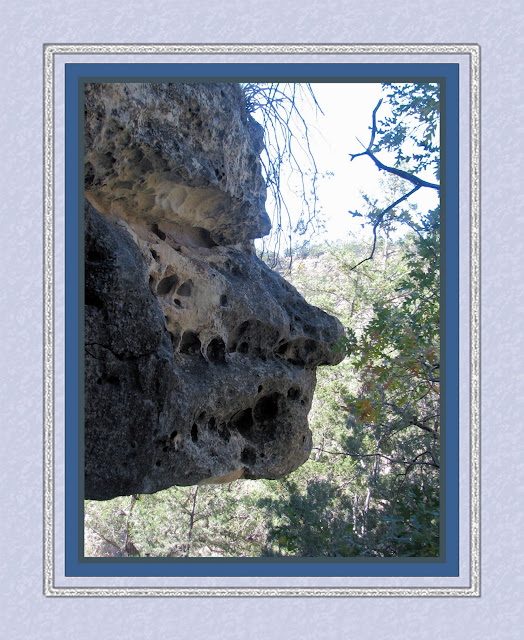{Click on an image to enlarge, then use the back button to return to this page}
This page last updated on 07/01/2017
Example 1: On the right side of the picture in (Fig. 01), I can visualize the profile of an Indian facing left. To me I can see an eye line, nose mouth, chin right down to the neck and an Adams apple. This picture was taken inside of the 'lower' canyon at Antelope Canyon in Page, Arizona,
 |
| (Fig. 01) |
Example 2: The natural rock structure in the collage in (Fig. 02) is the main focus of the "Duck Rock" hike in the Valley of Fire State Park. Even view from various angles, many think this rock looks much like the head of a duck.
 |
| (Fig.. 02) |
Example 3: Probably the most famous rock formation in the Valley of Fire State Park is "Elephant Rock". This huge formation of a standing elephant (Fig. 03) is the most visited formation in the park.
 |
| (Fig. 03) |
Example 4: The section of ledge below, resembling the profile of a face is another prime example of what I mean. This picture is of a natural overhang that was captured while walking past one of the hundreds of cliff houses I found on a visit to Walnut Canyon National Park. This natural cliff outcrop, worn by hundreds of years of natural erosion could only be seen at just the right angle. Hiking just below it, most people walked right on by and never noticed its natural beauty.
 |
| (Fig. 04) |
Click here to view more examples .... Index for Category - Unusual Pictures.
